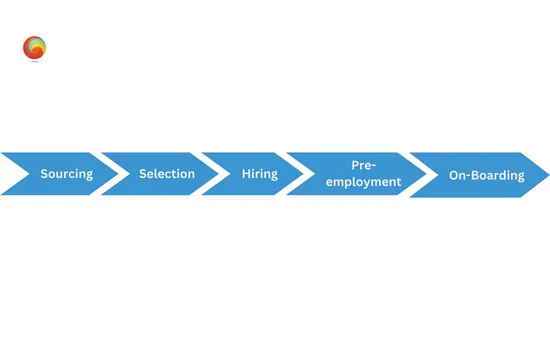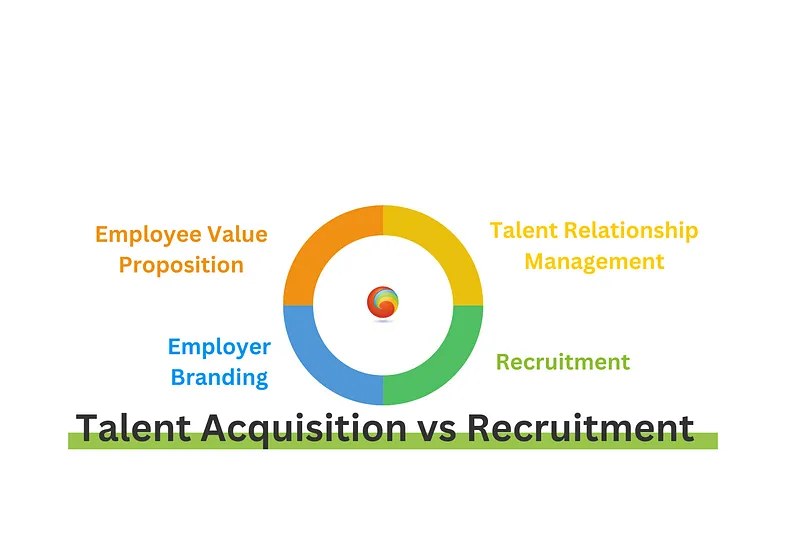Recruitment vs. Talent Acquisition: Understanding Talent Solutions In Depth
In the current scenario of the IT industry, where there is a lack of employable talent and fierce competition, a new and advanced talent acquisition process becomes crucial for organizations.
The traditional recruitment process, with its shortcomings in talent sourcing, screening, and engagement, is insufficient to meet the demands of the industry. Recognizing this need, Swabhav has developed a comprehensive Talent Acquisition Process that addresses these challenges and ensures a strategic and efficient approach to acquiring top IT talent.
By understanding the limitations of the normal recruitment process and embracing innovative strategies, Swabhav has revolutionized talent solutions in the IT industry.

Recruitment vs Talent Acquisition
Traditional Recruitment Process:
The normal recruitment process follows a linear approach, starting with the receipt of a Job Description (JD) and concluding with the presentation of a large volume of resumes to the client.
However, this approach lacks thorough screening, resulting in an influx of irrelevant resumes and extended turnaround time (TAT). The absence of exclusive talent pools and limited technical screening capabilities further hinder the process, preventing organizations from finding candidates with niche skills or those who align closely with their culture and values.
Swabhavs’ Talent Solution Process — Talent Acquisition
Swabhav recognized the need for a more advanced talent acquisition process that overcomes the limitations of the traditional approach.
Our Talent Acquisition Process is designed to strategically plan talent requirements, proactively source candidates, thoroughly screen them, engage with talent, and provide a seamless onboarding experience.
Let’s delve into the key components of our talent solution process!
Talent Planning and Hiring Strategy:

Swabhav begins by investing time and effort in talent planning. We extensively research our tech talent community and the talent pool available in the market, evaluate its alignment with required tech skills, and consider industry-standard compensation to attract top talent.
By continuously updating the JD, we ensure maximum value for both the organization and the talent. This strategic approach sets the foundation for a successful talent acquisition process.
Execution:

Talent Acquisition vs Recruitment
Swabhav employs advanced search tools, including their Tech Talent Community and talent pool in the market, to expand their candidate search and connect with suitable talent.
The Tech Talent Community comprises individuals who have undergone training on various technologies and possess diverse experience levels, creating an exclusive tech talent pool. To ensure thorough screening, a dedicated Tech Cell, consisting of experienced professionals (including architects, senior mentors, and project leads), conducts comprehensive assessments of technical skills and suitability for the role.
Talent Engagement and Onboarding:
Recognizing the competition for top talent, Swabhav prioritizes active engagement with potential candidates. Regular and personalized communication channels keep talent informed and interested in available opportunities. This approach fosters strong relationships and ensures a positive talent experience.
Additionally, Swabhav emphasizes seamless onboarding by working closely with clients and talents, facilitating a smooth transition, and creating a welcoming environment for new hires.
The Benefits and Differentiation:
Swabhavs’ Talent Acquisition Process offers several benefits over the normal recruitment process.
It reduces TAT by streamlining talent sourcing, screening, and engagement.
Exclusive talent pools enable organizations to find candidates with niche skills and cultural alignment.
The thorough screening process saves valuable time and resources.
Furthermore, the seamless onboarding experience ensures that talent can make valuable contributions from day one.
Swabhavs’ adoption of a Talent Sourcing Management (TSM) system promotes transparency, efficient communication, and problem-solving, further enhancing the talent acquisition process.
Conclusion:
The IT industry’s current scenario demands an advanced talent acquisition process that overcomes the limitations of the traditional approach.
Swabhavs’ Talent Acquisition Process offers a strategic and efficient alternative, addressing the challenges of talent sourcing, screening, and engagement. By embracing proactive strategies, leveraging exclusive talent pools, and ensuring seamless onboarding, Swabhav Techlabs has established itself as a leader in successful talent acquisition.
With reduced TAT, cost savings, and a streamlined process, organizations can confidently acquire top IT talent that aligns with their needs and drives business success.
Frequently Asked Questions
How is talent acquisition different from recruitment?
The difference between talent acquisition and recruitment is:
Talent acquisition is a strategic and comprehensive approach to acquiring top talent that focuses on long-term organizational needs and aligning candidates with the company’s culture and values. It involves proactive sourcing, thorough screening, talent engagement, and seamless onboarding.
Recruitment, on the other hand, is a more transactional process that primarily focuses on filling immediate job vacancies by sourcing candidates and matching their skills with job requirements. It typically follows a linear approach and may not involve in-depth screening or long-term talent planning.
Are HR recruiter and talent acquisition the same?
No, HR recruiters and talent acquisition specialists are not the same, although they may have overlapping responsibilities.
HR recruiters are primarily responsible for sourcing, screening, and selecting candidates for specific job openings within an organization. They focus on filling immediate vacancies and often work on a transactional basis.
Talent acquisition specialists, on the other hand, take a more strategic and long-term approach to acquiring top talent. They focus on developing talent pipelines, building relationships with potential candidates, and aligning talent with the organization’s long-term goals. Talent acquisition specialists often work closely with hiring managers and have a broader perspective on talent management within the organization.
Is talent acquisition harder than recruiting?
Talent acquisition can be more complex and challenging than traditional recruiting due to its strategic nature and focus on long-term talent planning.
Talent acquisition requires proactive sourcing, thorough screening, talent engagement, and a deep understanding of the organization’s needs and culture.
It involves building relationships, managing talent pipelines, and aligning candidates with the organization’s long-term goals. However, the level of difficulty can vary depending on the specific requirements, industry, and market conditions.
Is recruiting a part of talent acquisition?
- Yes, recruiting is a part of talent acquisition. Talent acquisition encompasses a broader and more strategic approach to acquiring talent, which includes activities such as talent planning, proactive sourcing, thorough screening, talent engagement, and seamless onboarding. Recruiting, on the other hand, focuses specifically on the process of sourcing, screening, and selecting candidates for specific job openings within an organization. In essence, recruiting is one of the components of the talent acquisition process.
